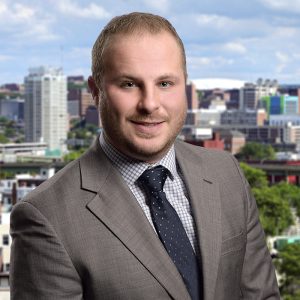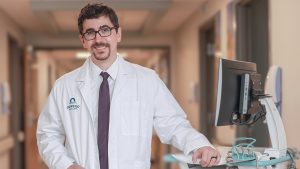SYRACUSE, N.Y. — The CEO of Syracuse Community Health Center (SCHC) recently breathed a sigh of relief at the passage of federal funding the center was seeking in the budget deal that President Trump signed on Feb. 9.
The budget includes more than $7 billion for community health centers (CHCs), teaching health centers (THCs), and the National Health Service Corps (NHSC), the office of U.S. Senate Minority Leader Charles Schumer announced Feb. 7. Schumer had helped negotiate the agreement, which will provide the funding for community health centers, like the one in Syracuse and others across the region.

“A lot of relief,” says Leola Rodgers, president and CEO of Syracuse Community Health Center, when asked about her reaction to learning that the funding would be renewed. She spoke with BJNN on Feb. 12.
(Sponsored)

It’s Time for Your Business to Think About Year-End Tax Planning
As the year-end approaches, it’s time to take proactive steps to help lower your business’s taxes for 2024 and beyond. Deferring income and accelerating deductions to minimize taxes can be

The Influence of Economic Uncertainty on Business Value
Businesses face uncertain conditions today, including geopolitical and cybersecurity risks, inflation concerns, environmental issues, and a lack of clarity about future tax laws and interest rates. Here’s an overview of
“When they didn’t pass [the budget] the first time at the end of September when it was due, it didn’t make us feel too bad because two years before that, it was [a similar situation with the funding],” she adds.
Community health centers were concerned about the lack of a new federal spending plan because about 70 percent of their federal funding comes from the expired Health Centers Fund, also known as Section 330 grant funding.
New York community health centers were facing the loss of up to $166 million in federal funding if the Health Centers Fund was not extended.
Rodgers says someone in her position gets “a little bit nervous” around the end of the year because it’s hard to craft a budget with uncertainty about the federal money coming in.
The Syracuse Community Health Center usually receives about $5.7 million in Section 330 funding, according to Rodgers.
“If they were to cut it 70 percent, that would mean $4 million for us and there’s just no way we could recover,” says Rodgers.
Without the funding, SCHC would’ve been forced to lay off nearly 75 employees, close three health-care delivery sites, and reduce services by $3.8 million, according to a news release that Schumer’s office issued Jan. 29. That same day, the Democrat visited the Syracuse facility to pledge his support and indicate that he would work to community health centers the funding that they were seeking.
The Syracuse Community Health Center employs nearly 260 workers and serves as a primary-care provider for more than 30,000 people.
About FQHCs
SCHC and similar facilities across Central New York are known as federally qualified health centers (FQHCs), according to information that the New York City–based Community Health Care Association of New York State (CHCANYS) provided at the news conference.
Federally qualified health centers are community-based health-care providers that receive funds from the HRSA health-center program to provide primary-care services in underserved areas, according to the HRSA website.
HRSA, which is short for Health Resources & Services Administration, is an agency of the U.S. Department of Health and Human Services.
Without the new budget deal, New York FQHCs could’ve lost up to $166 million in federal funding, which would lead to closures of health-center sites, layoffs of providers and staff, and a loss of access to primary and preventive care for “millions” of New Yorkers.
Federal FQHC funding comes from two sources that include annual discretionary appropriations and the health centers fund, which expired on Sept. 30, 2017, the end of the most recent federal fiscal year, according to the CHCANYS.
The centers use the funding to sustain health-center operations, including helping to “partially” cover the cost of caring for the uninsured.




